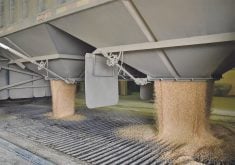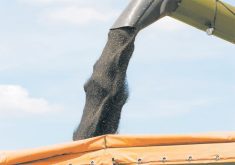The proposed acquisition of Viterra by Bunge has generated a lot of heat in recent weeks. Some fears are valid, but many are overblown.
The federal Competition Bureau has some serious concerns and has laid them out in a report. A number of farm organizations, including the Agricultural Producers Association of Saskatchewan, SaskWheat, Sask Barley and Alberta Grains, have weighed in with concerns. Saskatchewan politicians are competing to see which party can sound the most perplexed and the biggest champion of farmers.
There’s also a report by three Saskatchewan ag economists putting a $770 million annual cost on the lost competition that could result from the merger. Like most estimates of this nature, it’s based on some shaky, hard-to-quantify assumptions. Still, it will be widely quoted by merger opponents. The report was commissioned by the above noted farm groups. Funny how commissioned reports always support the point of view held by the those paying the bill.
Read Also

Invigor Gold variety viewed as threat to condiment mustard
Invigor Gold, the canola-quality mustard developed by BASF, is on a collision course with Canada’s condiment mustard industry. It’s difficult to see how the two can co-exist.
Yes, Bunge is a minority shareholder in G3, but G3 is a relatively new player that didn’t exist until the Canadian Wheat Board monopoly was dissolved. G3 has built many new loop-track high-throughput facilities and a monstrous grain export terminal on the West Coast.
This new player has been a disruptor in the marketplace, making the buying of grain more competitive. Will that change if Bunge and Viterra merge? As a minority shareholder, does Bunge really exercise much control over G3?
It’s quite possible that in order to satisfy critics and the Competition Bureau, Bunge will be compelled to sell its interest in G3. Maybe certain assets owned by Bunge and Viterra will need to be divested. It’s going to be interesting to watch this unfold.
One concern is the canola crushing facility proposed by Viterra for Regina. Merger critics say it is in doubt if the merger goes ahead. However, it also may not go ahead if the merger is quashed.
Either way, the expansion of canola crushing facilities to supply the renewable diesel market is set to change the face of a grain handling business that is already seriously overbuilt. Millions of more tonnes of canola will be delivered to crushers rather than inland terminals, putting an even bigger squeeze on elevator margins. At the West Coast, excess grain export capacity can be expected.
Merger opponents never talk about all the existing players in the industry. Beyond the big boys of Viterra, Richardson and Cargill, there are smaller but significant players like Parrish & Heimbecker and Paterson Grain. Grains Connect is a new player with a number of facilities. AGT Foods, known for being a pulse crop juggernaut, also deals in some of the traditional grains. So does Purely Canada.
AGT and Federated Co-op have announced plans to build a canola crushing facility in Regina to supply a renewable diesel facility.
The loss of head office jobs at Viterra in Regina is also cited as a concern. The concern is valid, but it has nothing to do with competition.
When you’re a farmer at the beginning of the supply chain, it’s natural to think everyone else in the system is making enormous profits. With Western Canada’s overbuilt system, margins in grain handling are actually thin and likely to get thinner, whether or not the merger proceeds.
If assets have to be divested to let the deal go through, expect some seriously discounted fire sale prices. Demand for additional assets is tempered in an overbuilt system.
Kevin Hursh is an agricultural journalist, consultant and farmer. He can be reached by e-mail at kevin@hursh.ca.


















